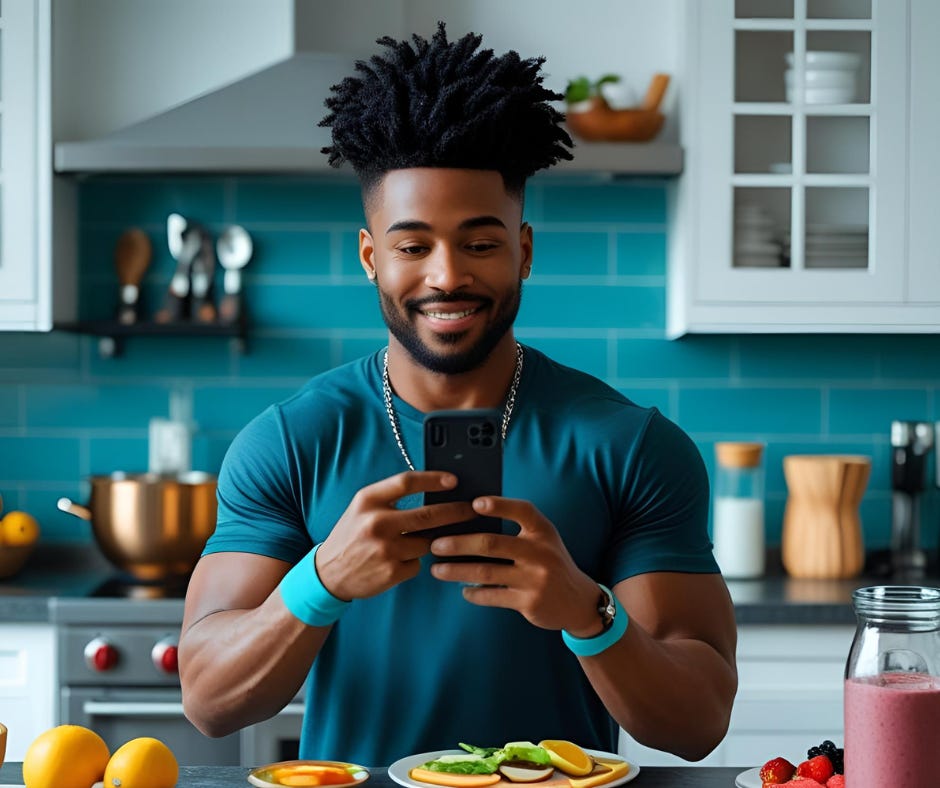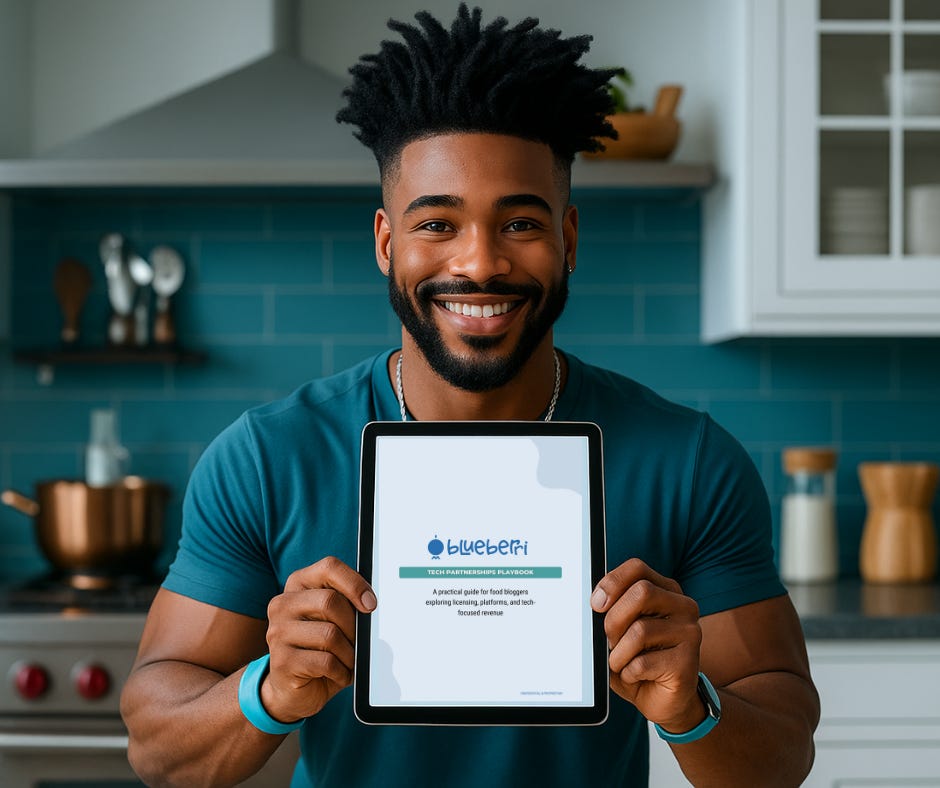404
You cooked. They didn't come.
What happens when a creator hits the growth jackpot, but their business backend can’t keep up?
It’s a question more and more food creators are quietly facing. Their content is booming. Their following is growing. They’ve figured out how to show up consistently and build trust with their audience. But beneath the surface, the systems that support their content —structure, storage, workflows, and licensing —are barely holding together.
This isn’t just about staying organized. It’s about staying in business.
As platforms move toward AI-powered search, structured recipe experiences, and integrated ecommerce, the creators who appear successful from the outside are finding themselves underprepared for what those opportunities actually require. Content is being used in new ways across apps, devices, and smart tools, and the only way to participate is to have the backend infrastructure in place.
Today’s story is about what happens when a creator goes viral without that infrastructure, and what it takes to turn visibility into real, sustainable opportunity.
Let’s talk about Jay.
Jay had “made it.”
At least, that’s what it looked like online.
At just 26, Jay was a rising star on his channel, FitTok, a self-taught trainer known for meal prep content that was honest, high-energy, and just irreverent enough to stand out.

He joked that his niche was “macros without the misogyny.”
His followers? Loyal.
His visuals? Crisp.
His meal prep series? Viral.
One of his TikToks, “High-protein snacks that don’t taste like regret”, hit 3.5 million views and landed him features in a wellness app, a newsletter plug from a major supplement brand, and a flood of DMs from health startups asking to collaborate.
Jay had gone from full-time fitness coach to full-time creator in under a year.
He had a good camera, a Notion board full of content ideas, and even a part-time video editor he met on Fiverr.
By every metric, he was killing it.

But no one talks about what happens after you go viral.
Jay was overwhelmed.
His systems were scrappy.
His inbox was a mess.
And his business model? A total blur.
He didn’t know which partnerships were legit or what “non-exclusive usage rights” really meant.
He didn’t know how to price a licensing request for three of his smoothie videos.
He didn’t have a structured content library, or a backup plan if a platform changed the algorithm (which they always do).
And then came the email.
A smart kitchen startup, backed by one of Jay’s favorite VCs, wanted to license ten of his videos for use in their app. They asked for hi-res assets, ingredient breakdowns, and structured metadata so their app could “recognize and index” each recipe.
Jay had none of it.
He replied:
“Can I get back to you next week?”
Then he panicked.

Virality doesn’t equal viability
Jay’s story is the story of hundreds of creators right now.
They’ve mastered short-form storytelling, built real trust with their audience, and created powerful IP without even knowing it.
But what they haven’t built?
The backend infrastructure to protect, package, and pitch their content for longer-term use.
This is the quiet failure point for most creators:
No structured library of content
No clear workflow for licensing
No consistent way to pitch partnerships
No time to systematize while still posting daily
This is where COSE™ comes in
Create Once, Share Everywhere.
COSE™ (pronounced kohz) is a content framework I’ve used with recipe creators, food tech platforms, and influencers like Jay to move from content overwhelm to content operations.
Here’s the breakdown:
1. Create
Produce once, but intentionally. Whether it's a recipe, video, or guide, the content is planned with structure and reuse in mind.
2. Organize
Build a system for tagging, categorizing, and storing content so it’s findable and future-ready. Think Airtable meets metadata.
3. Structure
This is where things start to happen: turning free-form content into structured formats (like schema, clean JSON, or modular clips) that platforms can actually use.
4. Expand
Repurpose, remix, and pitch your content for platforms beyond social apps, partnerships, smart devices, or even licensing deals.
Jay didn’t need more content ideas.
He needed a system.
Jay’s turning point
After ghosting the startup for 3 days (and nearly deleting the email out of anxiety), Jay did something different:
He stopped trying to power through.
He took a step back and audited his content.
Not the engagement. The infrastructure.
What had he created that was actually reusable?
Where was it stored?
How could he make it easier for others to license and use it?
He didn’t know how to answer any of those questions, so he downloaded the Tech Partnerships Playbook, walked through the checklists, and started building his system one piece at a time.
He created a “pitch-ready” folder in Google Drive with:
Tagged, hi-res videos
Ingredient breakdowns for every meal-prep series
Brand-safe thumbnails and cutdowns
A document outlining his standard licensing terms
He even emailed the startup back with a cleaner offer and got the deal.

What Jay learned (and what most creators miss)
You don’t need a manager to handle partnerships—you need clarity.
You don’t need a huge team—you need a simple framework.
You don’t need to go viral again—you need to make the most of what you already made.
Jay didn’t create more content to land his first big licensing deal.
He just structured and pitched the right content.
Want the Playbook for free?
When you become an annual Blueberri Pi member, you get:
The Tech Partnerships Playbook ($150 value)
A free strategy session with me ($300 value)
That’s $450 worth of guidance to take your content from hustle to structure
Whether you're in food, fitness, or beyond, the best thing you can do isn’t post more.
It’s to build the content system that lets you own more, and earn more from the work you’ve already done.
You don’t need to go viral to start building the systems that support your content long-term. Whether you're just getting traction or already fielding partnership emails, structure isn’t extra, it’s non-negotiable.
And you don’t have to figure it out alone.
Your friend in food,
Sandie
P.S.
This newsletter is free to read, but takes time to write (and I love doing it).
If it’s helped you think differently about your content or helped you feel seen in the messy middle, consider becoming a paid subscriber.
💙 Paid members get:
Strategy guides and bonus posts
First access to workshops + tools
Private Q&As
And help keep this work sustainable
Let’s build smarter food and content systems, together.


